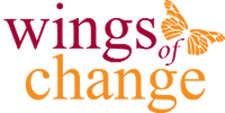Here at Wings of Change, we utilize the newest technology to train your brain for optimal performance, enhanced self-regulation and alleviation of many mental health challenges.
swLORETA neurofeedback is an advanced form of brain training that uses a computer to monitor and provide real-time feedback to help regulate brain activity. It stands for standardized weighted low resolution electromagnetic tomography and is used to analyze and train deeper brain structures, unlike traditional neurofeedback that focuses on the brain's surface. This method can target specific brainwave patterns, networks, and connectivity between areas (coherence) to address issues like anxiety, depression, ADHD, and PTSD more efficiently and potentially requiring fewer sessions than traditional methods.
How it works
Brain mapping: A therapist uses a full 19-sensor cap to record and analyze brainwave activity (EEG).
Deep brain analysis: The sw LORETA software creates a 3D map of the brain, allowing it to identify and target activity in deeper structures and networks, not just the surface.
Real-time feedback: The system provides real-time feedback through visual or auditory cues, such as games, images, or sounds.
Brain training: The feedback rewards the brain for moving toward a more normal or desired pattern of activity, helping to improve brain function and connectivity.
Key advantages of SW LORETA neurofeedback
Targets deep brain structures: Unlike traditional methods, it can train areas like the cerebellum and cingulate cortex.
More specific training: It can target specific areas and networks, leading to more precise training for symptoms.
Increased efficiency: It may require fewer sessions for results compared to traditional neurofeedback.
Analyzes connectivity: It can train how well different brain areas communicate with each other (coherence) and the time it takes for messages to travel (phase lag).
Conditions it may help with
Anxiety and depression
Attention-deficit/hyperactivity disorder (ADHD)
Post-traumatic stress disorder (PTSD)
Autism
Insomnia
Traumatic brain injury
Chronic pain

